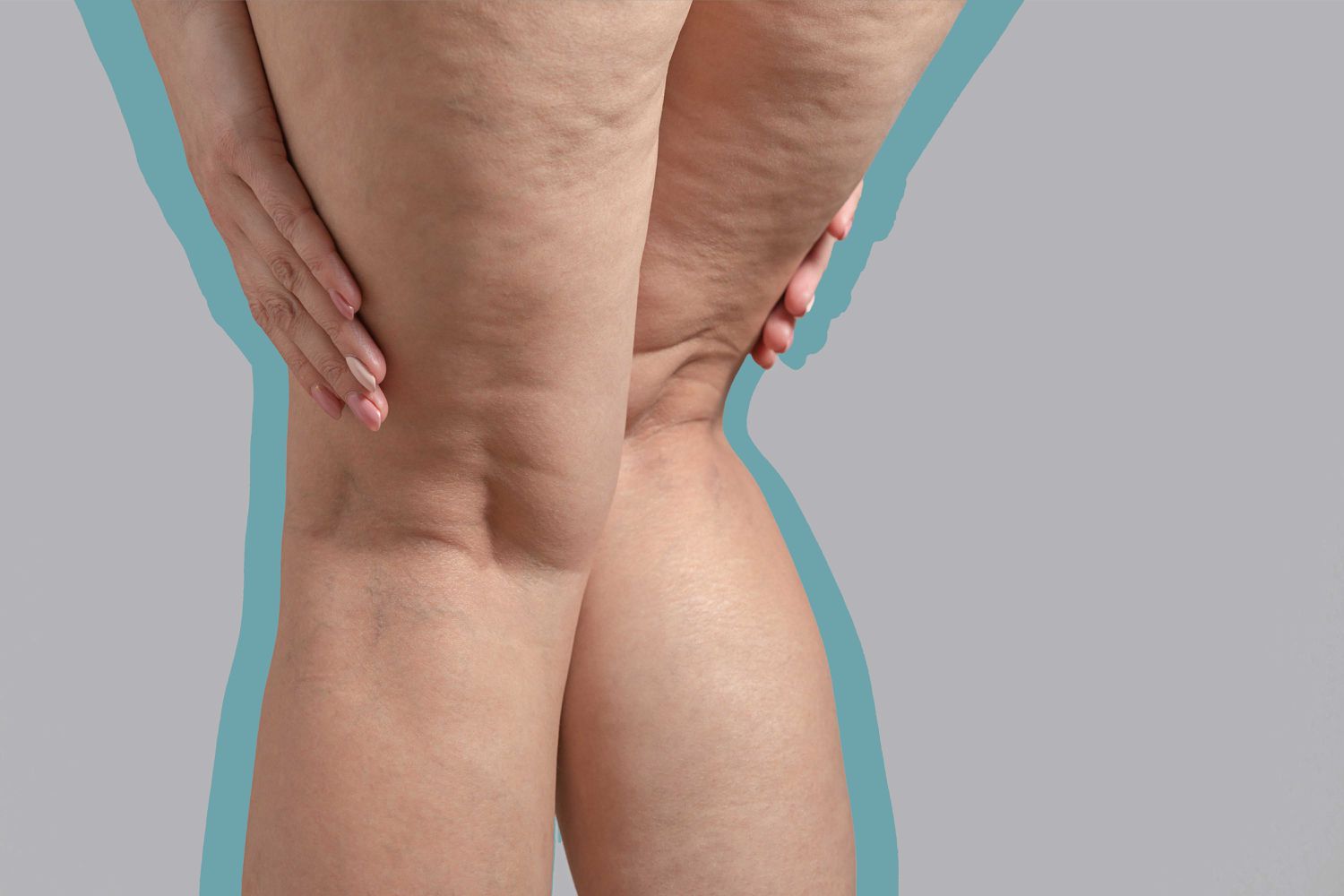Understanding and Managing Cellulite: Causes and Reduction Tips

We've been conditioned to believe that cellulite isn't the norm — but that couldn't be further from the truth. Around 85 percent of women over 21 have cellulite somewhere on their body. 'Cellulite is a harmless, cosmetic condition where divots and dimples may occur in the skin of the thighs, hips, and buttocks,' explains Dr. Lyle Leipziger, Chief of Plastic Surgery at North Shore University Hospital and LIJ Medical Center. Having cellulite is normal and perfectly okay. But, if it bothers you and you're wondering if there are ways to reduce its appearance naturally, a few self-care practices can help. Here's everything you need to know about reducing cellulite.
You're likely familiar with how cellulite looks (again, it's very common to have!), but what exactly are we looking at when we see cellulite appear on our bodies? 'Cellulite occurs when fat deposits push through the connective tissue beneath the skin,' explains Leipziger. 'The connective tissue acts as restrictive bands around the superficial fat creating the dimpled appearance.' This is why cellulite is typically found on areas of the body that naturally have more fat tissue, like our thighs, hips, and butt.
Again, cellulite is a harmless condition and can happen to anyone. 'Cellulite can appear regardless of body type or weight,' says Marisa Garshick, MD, FAAD, a board-certified dermatologist at MDCS Dermatology. Though cellulite is not necessarily a sign of a poor diet or lack of exercise, Garshick says that these factors, along with genetics, hormonal changes, and dehydration, can contribute to its development.
Age can also impact cellulite development. 'As we age, skin loses some of its elasticity and can make the appearance of cellulite more apparent,' explains Dr. Howard Sobel, Clinical Attending Cosmetic Dermatologic Surgeon at Lenox Hill Hospital. Getting older doesn't necessarily mean you're guaranteed to see more cellulite — but it is something to be aware of.
It's important to remember that while certain changes can help improve the overall appearance of cellulite, there's no magic cream or regimen that will eliminate it completely. If you want to reduce the appearance of cellulite, here are a few tips that can help.
'Fruits and vegetables that are high in antioxidants and can promote overall skin health and may improve the appearance,' explains Garshick. Leafy greens like kale and spinach, blackberries, blueberries, and citrus fruits like grapefruit and oranges are all excellent sources of antioxidants that can help reduce the appearance of cellulite. Also, consider omitting certain foods from your diet for best results. 'Reducing the intake of processed foods, sugar, and salt can also help as can staying hydrated by drinking plenty of water,' says Garshick.
'Regular exercise will increase muscle mass and help flatten cellulite,' Sobelexplains. 'It also helps to increase blood flow to certain areas of your body, which helps speed up fat loss. Therefore, running, resistance training, and bicycling can help.' Garshick recommends incorporating a mix of strength training and cardiovascular exercises into your routine, which helps burn fat and build muscle, reducing the appearance of cellulite.
If you're eating healthy and exercising regularly, weight loss from these tips can also help reduce cellulite's appearance. 'Cellulite forms when one's fibrous bands, which connect your skin to your underlying muscle, tighten in an irregular pattern,' Sobel explains. 'The tightening pulls down on your skin, and the normal layer of fat beneath the skin pushes up, which causes puckering. Therefore, by lowering your weight and fat content, you get less of a pull of fat against the fibrous bands.' That said, losing weight is not appropriate for all people, and weight loss may not always result in a reduced appearance of cellulite.
While retinol may not be a 'natural' option, it's not a surgical procedure, so we're considering it a good option for cellulite reduction. 'Stimulating collagen production can contribute to smoother and tighter skin texture,' explains Garshick. 'While it may not eliminate cellulite dimples, it can certainly enhance the surface appearance.' Introduce skin to retinol cream slowly, applying every other day to allow the skin to adapt and avoid irritation.
'Caffeine is believed to potentially reduce cellulite by breaking down fat and tightening the skin through various mechanisms like blocking phosphodiesterase activity and dehydrating the skin,' says Garshick. 'However, more research is needed to solidify its efficacy.' For best results, opt for creams that include caffeine as an active ingredient, along with other skin-smoothing antioxidants and peptides. 'Peptides bolster skin strength, potentially leading to a firmer and tighter appearance, which could improve cellulite's overall visibility,' explains Garshick.




